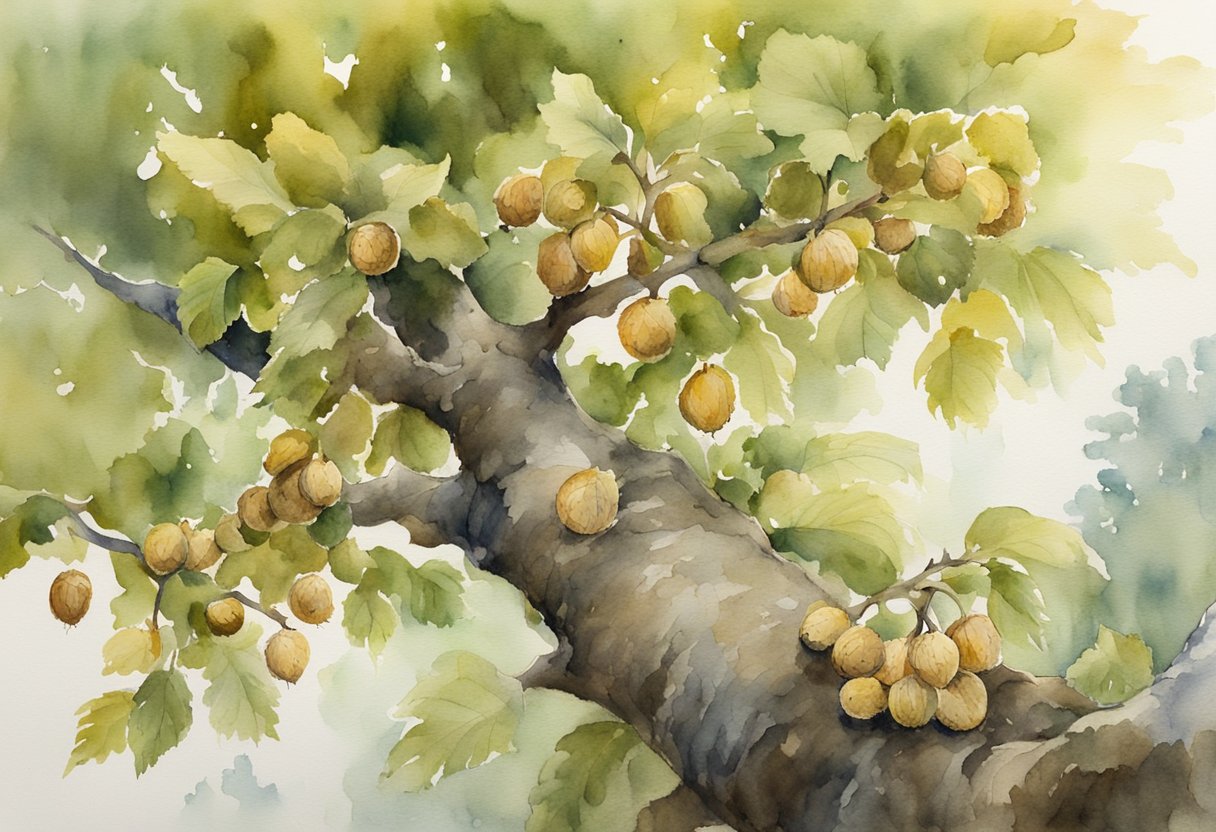
The Mystical Hazel Tree: Symbolism, Magic, and Ecological Importance
Delve into the mystical world of the hazel tree, celebrated for its wisdom, magical properties, and ecological contributions. Discover its historical roots, modern practices, and enduring legacy.
The hazel tree, an emblem of wisdom and enchantment, has captivated humanity for centuries. Known for its magical properties, the hazel is revered in mythology, folklore, and modern magical practices. Its ecological significance only enhances its allure, making it a symbol of harmony between nature and spirituality.
Historical Significance of Hazel Trees
Mythological Associations
The hazel tree (Corylus) holds a prominent place in mythology, celebrated as a vessel of knowledge and inspiration. In ancient tales, poetic muses danced around hazel groves, bestowing artistic visions upon seekers. Associated with air, the tree is linked to Mercury (Hermes in Greek mythology), the god of communication and intellect.
Key Associations:
- Deities: Hermes/Mercury, Artemis/Diana, Thor
- Qualities: Wisdom, Knowledge, Inspiration
- Element: Air
Its blossoms herald the arrival of spring, symbolizing renewal and growth. Druids revered hazel as a sacred tree, recognizing its connection to divination and truth. The rustling leaves were said to carry the Earth's voice, uniting humanity with the universe.
Hazel in Folklore and Legends
Hazel twigs have long been crafted into divining rods, guiding seekers to water, treasures, or mystical ley lines. They were also believed to protect against malevolent spirits, with tales of the devil fleeing from hazel's touch.
Uses in Folklore:
- Divining for water or treasure
- Protection against evil spirits
- Doorways to the Otherworld
The Celts saw hazel as synonymous with concentrated wisdom. Its nuts, rich in nutrients, have been sustenance and a symbol of prosperity since ancient times. Hazel groves were often viewed as thresholds to mystical realms, beckoning travelers to explore unseen worlds.
Magical Attributes of Hazel

Wisdom and Inspiration
Druids revered hazel for its connection to poetic inspiration and intelligence. Those seeking knowledge often meditated beneath its branches, listening to whispers of ancient wisdom.
Fertility and Love
Hazel symbolizes fertility and love in folklore. Its nuts encapsulate romantic serendipity, while the tree itself nurtures the energy of creation.
Protection and Healing
Hazel offers protection and healing in magical practices. Circles drawn with hazel wood are said to shield the spirit, while its leaves and bark are used for remedies that soothe coughs and restore vitality.
Divination and Communication
Hazel twigs are famously used in dowsing and divination, helping practitioners locate hidden truths and open channels to the mystical.
Cultural and Symbolic Uses
Ritual and Ceremonial Tools
Hazel branches, often used to craft magical wands, are favored for white magic and healing. Forked hazel sticks, traditionally cut at sunrise on a Wednesday, are employed in divination practices.
| Tool | Purpose | Magical Significance |
|---|---|---|
| Wands | White magic, healing | Conduit for divine energy |
| Forked sticks | Dowsing for water or treasure | Connection to the Earth’s secrets |
Astrology and Planetary Correspondences
Hazel aligns with Mercury and the Sun, reflecting intellectual and communicative energies. The tree’s association with air symbolizes potential and the blossoming of ideas.
Festivals and Seasonal Celebrations
During Beltane, hazel branches are hung on doors to invite protection and good fortune. Ancient customs also incorporated hazel in ceremonies at holy wells and sacred spaces.
Hazel in Modern Practices

Tree Magic and Woodworking
Hazel remains a favorite for crafting tools used in spiritual practices. Its wood channels energy effectively, making it ideal for divination and protection.
Culinary and Medicinal Applications
Hazelnuts, rich in magnesium, potassium, and protein, are valued for their health benefits. Hazel leaves and bark are used in teas and remedies for respiratory issues.
| Nutrient | Benefit |
|---|---|
| Magnesium | Supports bone health |
| Potassium | Regulates blood pressure |
| Protein | Promotes muscle growth |
Ecological Importance and Conservation
Hazel Tree Habitats and Biodiversity
Hazel trees support diverse ecosystems, providing shelter and nourishment for wildlife. Pollinators thrive on their catkins, while their dense foliage creates habitats for countless species.
Conservation Efforts
Efforts to preserve hazel populations focus on hybridization to resist disease and implementing riparian buffer zones to protect waterways. These measures ensure hazel's legacy as a vital ecological contributor.
Key Takeaways
- The hazel tree symbolizes wisdom, protection, and healing in various traditions.
- It plays a pivotal role in folklore, magic, and ecology.
- Modern practices honor its historical roots while embracing its ecological significance.
Hazel stands as a bridge between the earthly and spiritual realms, weaving a timeless connection between humanity and nature.




 https://witchyhour.com
https://witchyhour.com